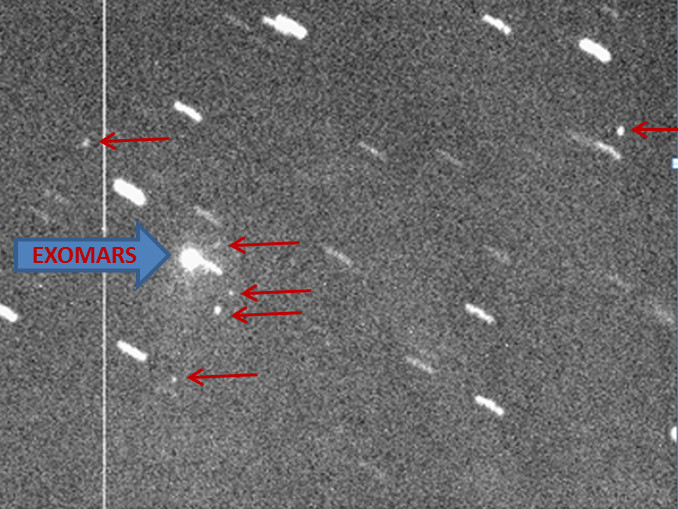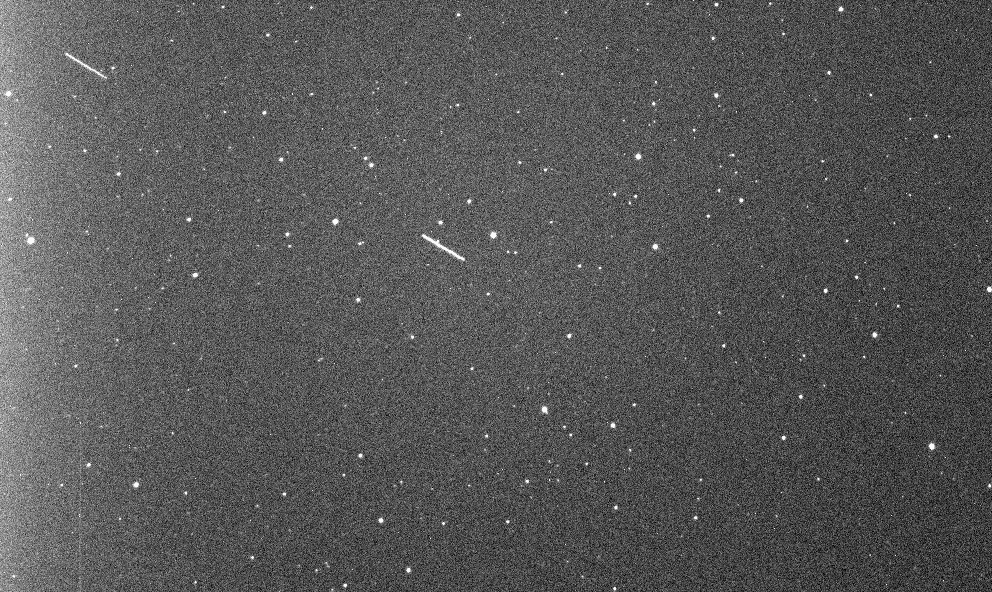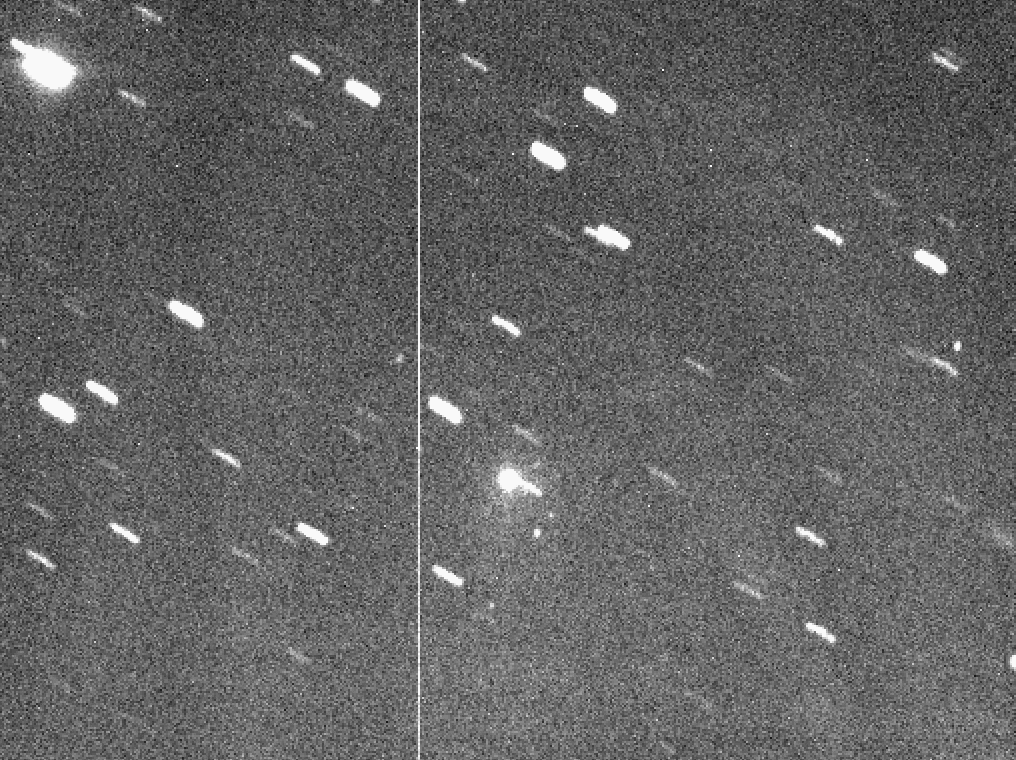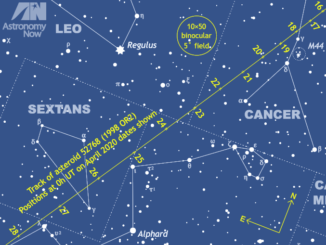
Following separation from the final stage at 8:13pm GMT (20:13 UT), the craft left on a trajectory pointing to where Mars will be in October, travelling at 33,001 kilometres/hour (20,500 mph) with respect to Earth.
For asteroid hunters, ExoMars offers a perfect target because its departure mimicks, in reverse, the approach of a small near-Earth object, or NEO. These include rocky asteroids formed between the orbits of Mars and Jupiter which head towards Earth every so often.
For the ExoMars launch, ESA’s NEO coordination centre in Italy organised an international campaign for ground-based optical observations of the departing spacecraft.
Quick imaging of a rapidly moving object whose location is only approximately known in a short time window is akin to what would happen if an asteroid were discovered on an imminent impact trajectory with Earth.
This information was then shared widely with ESA’s network of collaborating observatories in the Southern Hemisphere, from where ExoMars was observable. Excellent images were acquired by Alison Tripp and Sarah Roberts using a 1-metre aperture telescope in Australia, and by Grant Christie at the Stardome Observatory in Auckland, New Zealand.
In their images, compiled into an animation below, the spacecraft appears as a bright object surrounded by at least six other fainter spots — elements of Proton’s discarded upper stage — moving together in the sky (see red arrows in annotated still at the top of the page).



